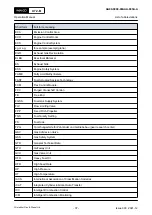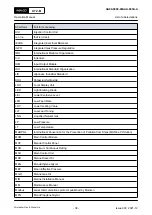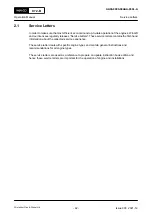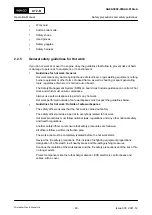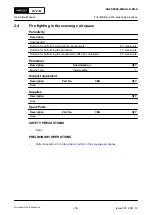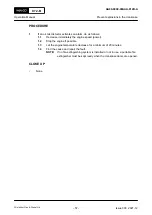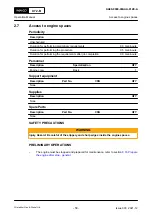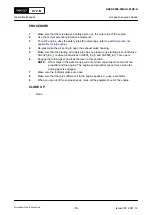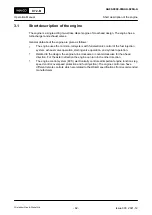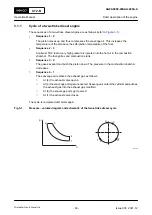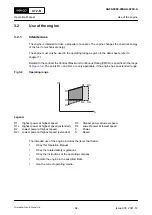
2.3.2
Causes of fire
The causes of fires are as follows:
•
If sealing rings of the piston rod gland are defective, system oil and cylinder oil will collect
in the piston underside. If the drain pipes from the piston underside are blocked, this oil can
not drain. A high temperature in the piston underside then can cause a fire.
•
If piston rings are defective, combustion gases and sparks can go into the piston underside.
Contamination in the piston underside then can cause a fire.
You must do regular checks of the bottom of the cylinder block and scavenge air receiver to keep
clean the cylinder block and scavenge air receiver, refer to section
8.5 Do checks during operation
.
2.3.3
Indication of a fire
The indications of a fire are as follows:
•
You can hear the related temperature alarms.
•
A large increase in the exhaust gas temperature of the related cylinder and an increase in
piston underside temperature.
For the fire-fighting procedures, refer to section
2.4 Fire-fighting in the scavenge air space
.
X72-B
AA00-0000-00AAA-012B-A
Operation Manual
Contamination and fire in the scavenge air spaces
Winterthur Gas & Diesel Ltd.
- 51 -
Issue 003 2021-12

